The customer journey can be long or short, but it usually follows the same path—a “sales funnel”, where a wider pool of potential customers flows down to a narrower, more select group of paying customers.
If you manage your sales funnel well, you’re giving your company the best opportunity to guide the most promising prospects from first contact all the way to a purchase, and beyond.
Here, we’ll explain the different elements and stages of the sales funnel, and show you how great customer relationship management at each stage can improve your conversion rates.
What is a sales funnel?
A sales funnel is a way to visualize the customer journey, as someone transitions from casual website visitor to loyal paying customer.
Since not everyone ends up buying, you’ll have more prospective customers at the beginning of the journey than paying customers at the end. It’s this ever-narrowing flow that suggests a funnel.
The idea of sales funnel management is to capture the interest and build the motivation of leads at the top of the funnel, so that you can guide those most likely to buy right down to the bottom.
Why is the sales funnel important?
The sales funnel model is important for your sales performance because it helps you think about marketing and sales activities in a more systematic way. As a result, you’ll attract better leads and convert more of them into customers.
For example, instead of creating a blog because you’ve heard that it’s a good idea, you’ll be able to decide that your blog is there to make people aware of your product and attract more top-of-funnel leads (for example.) This will help you evaluate whether or not your blog is doing its job.
The sales funnel is a simplified version of how people buy, especially if you work in a B2B environment. A more accurate drawing of the sales process might look more like a rat’s nest, with people moving forward, taking a step back, considering other options, pausing on the purchase process, and skipping straight from awareness to negotiating the price.
It’s still useful, however, because it gives you a straightforward way to frame your go-to-market strategy and think mindfully about the customer journey.
To put the sales funnel approach into practice effectively, you need to understand its structure and architecture. Let’s look at the six stages of the customer journey, from the top of the funnel (TOFU) to the bottom (BOFU).
The 6 stages of the sales funnel
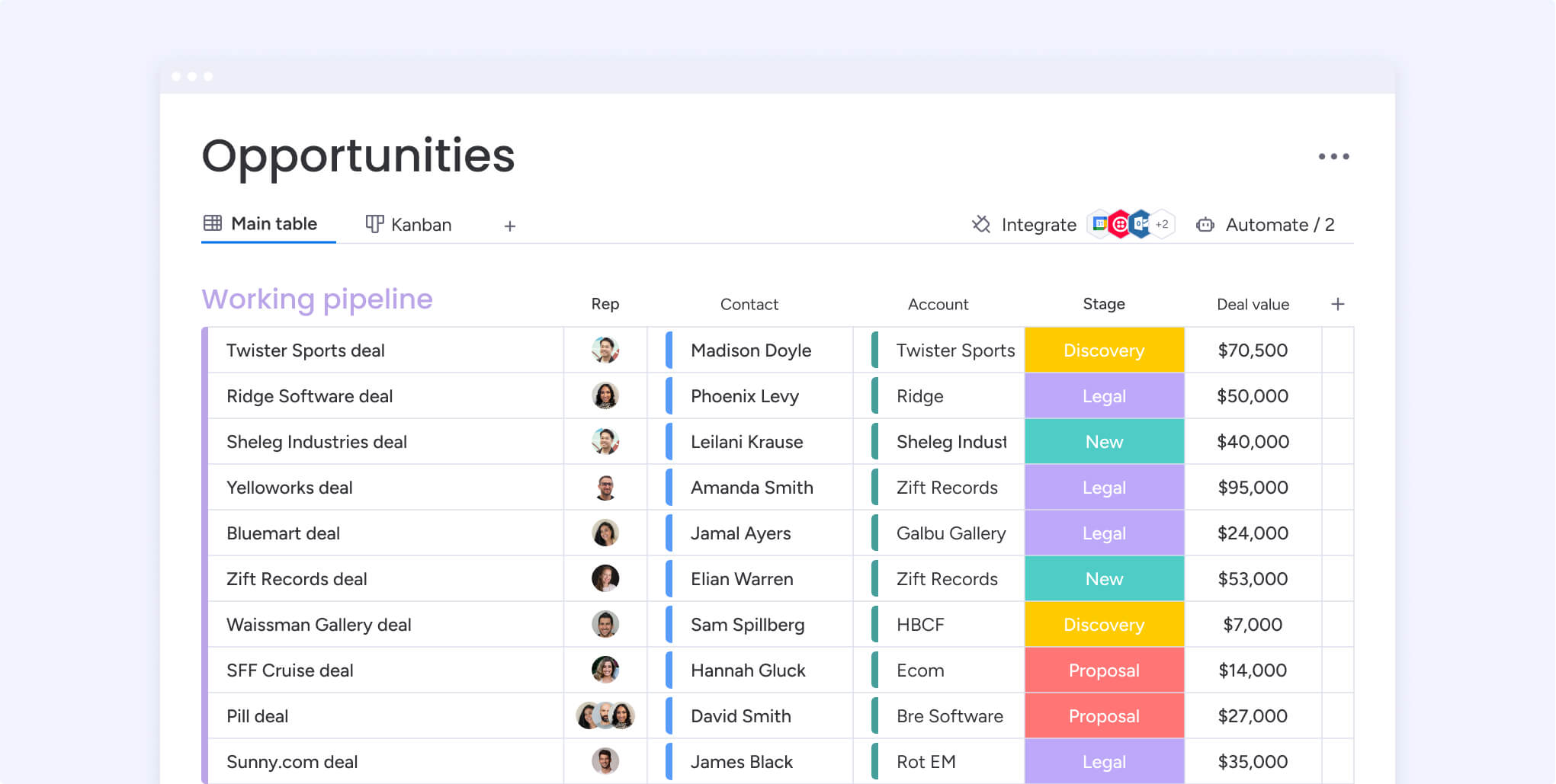
Stage 1: Awareness
This is when your prospect first learns that your company exists, and might be able to help with a problem they’re facing. Maybe they hear about the company through your marketing, advertising, social media, or word of mouth.
Prospective customers who exit the sales funnel at stage 1 either weren’t captivated by your product or concluded instantly that it wasn’t for them.
Your aim in stage 1 is not to try and get as many people as possible into the funnel. After all, you don’t want to waste time and effort trying to sell to people who will never want to buy from you.
Instead, your goal is to capture the interest of your ideal customer profile (ICP), by focusing your marketing efforts on showing them that you understand their problem and could help them with it.
Stage 2: Interest
If you’ve created interest effectively, prospects are not just aware of your product but actively want to find out more. Here, they might engage more deeply with your online content, sign up for your newsletter, register for a webinar, or comment on your social media posts.
Remember that your prospect is likely to be in your competitors’ sales funnels too. Providing valuable and easily accessible content is key here for keeping them in the funnel.
Stage 3: Consideration
At this stage, your prospective customer may have narrowed their choices down to two or three alternatives — and your company is one of them. They’re weighing up their options and may compare reviews, request more information, or even ask for a consultation.
This is where you can create an offer that sways the balance in your favor. With the right promotion, discount, or trial, you can even achieve a soft close to the deal.
Stage 4: Intent
If you’ve nurtured your prospects this far and they’re still in your sales funnel, they’ve demonstrated a clear intention to purchase. Whether they’re following up on their demo, evaluating the features and customization options, or requesting a quote. they’re now showing their readiness to move forward with the buying process.
At this point, the sale is yours to lose. This is where you want to demonstrate exactly how your product or service will meet their specific needs and alleviate their pain points.
Stage 5: Purchase
This is where you seal the deal and your prospect becomes a customer, purchasing your product or service. You agree on a price, finalize and sign a contract, and where the money changes hands.
It’s worth noting that the sales funnel does not end after the customer makes a purchase.
Stage 6: Loyalty
You have a new customer, but if your sales funnel is to be a true success, you’ll want them to remain a customer. This is where the sales funnel enters the post-purchase sixth stage: loyalty.
If you have managed the customer journey well, you will hopefully have a satisfied customer who is happy with your brand. You should now nurture that satisfaction, so that they become a return customer and even an advocate for your brand.
This means ongoing communication, engagement, and support — such as delivering excellent after-sales service or asking for feedback and testimonials.
This stage not only helps to build long-term relationships and improve your customer lifetime value (CLV). It can also drive new prospects your way. Word-of-mouth referrals and positive reviews can contribute to the top of the sales funnel.
5 benefits of a sales funnel
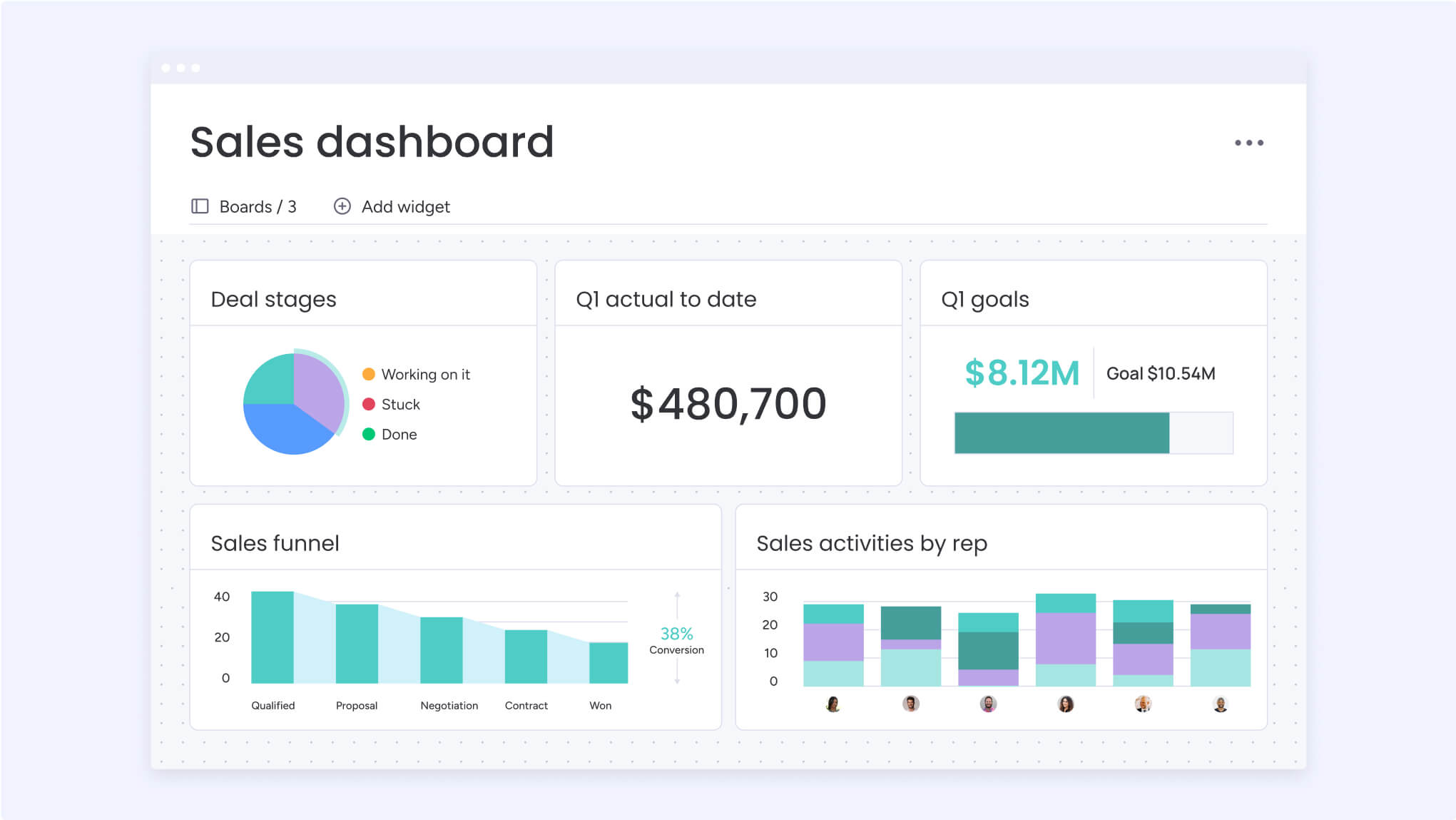
There are a lot of benefits to adopting a sales funnel approach to managing your customer relationships:
1. A clear structure
The sales funnel is an excellent way to visualize the customer journey. It allows your marketing and sales teams to understand and prioritize leads, so they can ensure the best customer experience and the most productive use of the business’ resources and opportunities.
2. Effective lead management
Organizing and segmenting leads by funnel stage lets you hone your marketing and sales approach to the needs and preferences of your prospects. This improves your lead nurturing, keeps people in the funnel, and reduces churn.
3. Better conversion rates
With a proactive sales funnel approach, you get to identify the bottlenecks or obstacles that may hinder the conversion of leads into customers.
By optimizing each stage of the funnel and implementing targeted strategies, businesses can streamline the buying process and improve overall conversion rates.
4. Improved customer insights
By keeping up with your prospects’ progress along the sales funnel, you can gain valuable insights into their behavior, preferences, and pain points. This can inform your messaging and help you personalize your interactions, so you can adapt to each person’s needs and expectations, which can be invaluable for customer satisfaction and loyalty.
5. Continuous improvement
Great data about your key metrics, combined with input and feedback from leads, customers, and sales teams can help you plan more strategically, make more informed decisions, and allocate resources more efficiently to optimize and refine your sales funnel from top to bottom.
How do you create a sales funnel?
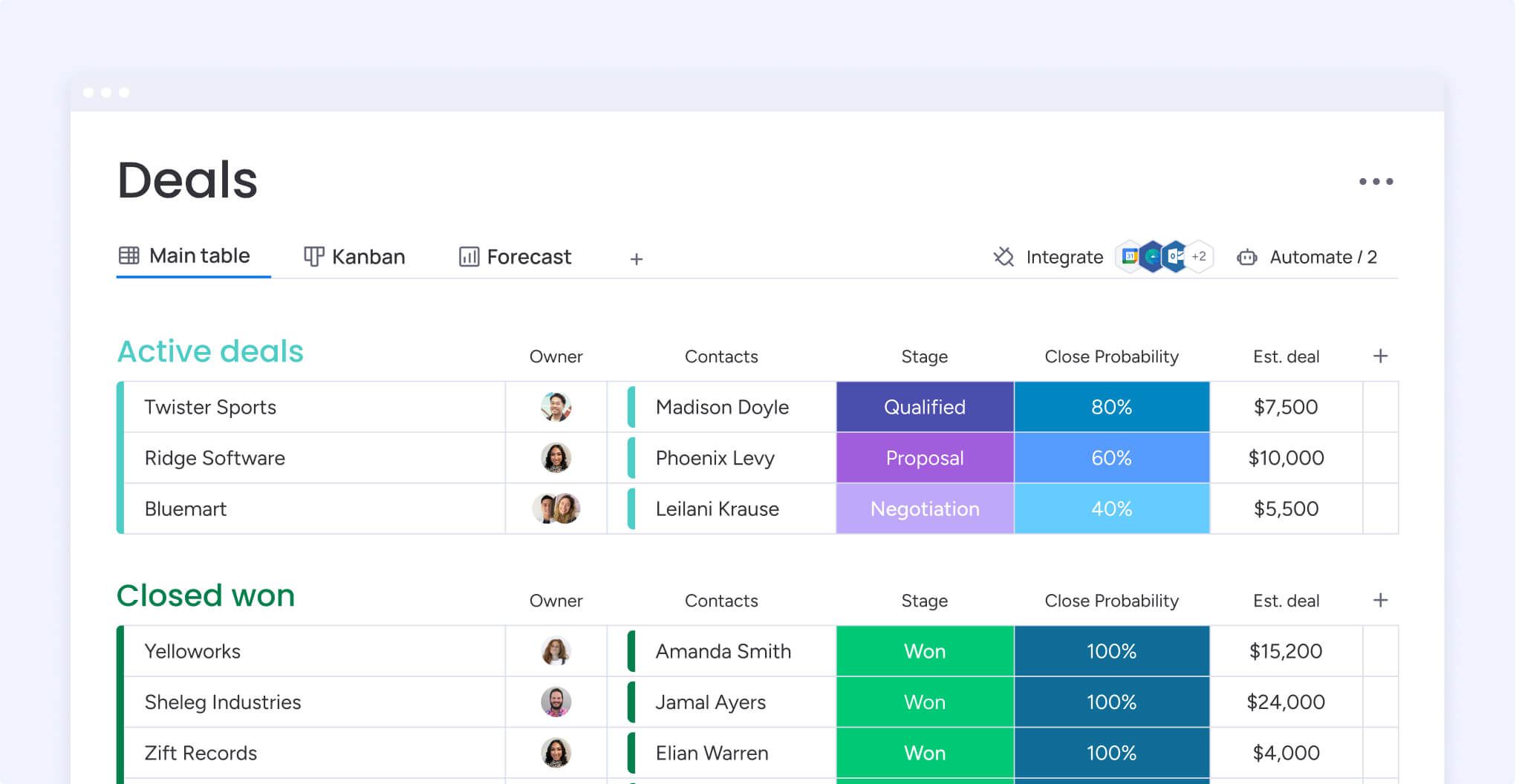
To create an effective sales funnel model you need to consider what you will do at each stage to keep your leads moving through, rather than exiting the funnel. You need strategies in place at each stage to attract, interest, and retain your leads effectively.
A fully-customizable customer relationship management tool like monday CRM can help you manage those strategies more easily.
Try monday CRMStep 1: Analyze customer behavior
Even before you start to target new leads, you need to understand the behavior of your current customers. Ask yourself these questions:
- What do we know about our customers in terms of demographics, interests, and shopping preferences?
- What do we not know about our customers and need to find out?
- Why are our current customers with our company? What made them choose us?
Don’t assume you already have the answers. Consider surveying or interviewing your current customers to find out more. Your non-buyers — those prospects who left the sales funnel — can also shed some light on how your sales process could be improved.
You can easily analyze the survey results in a monday CRM, bringing all your sales funnel data together in one centralized place.
You could even sweeten the deal by offering discounts on future purchases, rebates on their latest bill, or vouchers.
Step 2: Build a landing page
Armed with a strong understanding of your ideal customers, you can now focus on lead capture to attract new prospects into your sales funnel. Having an appealing landing page is crucial here.
A landing page is the dedicated web page your prospects will be directed to if they, for example, click on your social media ad or scan your QR code. Unlike your home page, a landing page is specific to the marketing campaign featured in the ad — the topic that captured their attention.
Landing pages typically allow you to gather your leads’ contact details, so often include a specific call-to-action (CTA) via a short form or pop-up. They often offer an incentive in exchange.
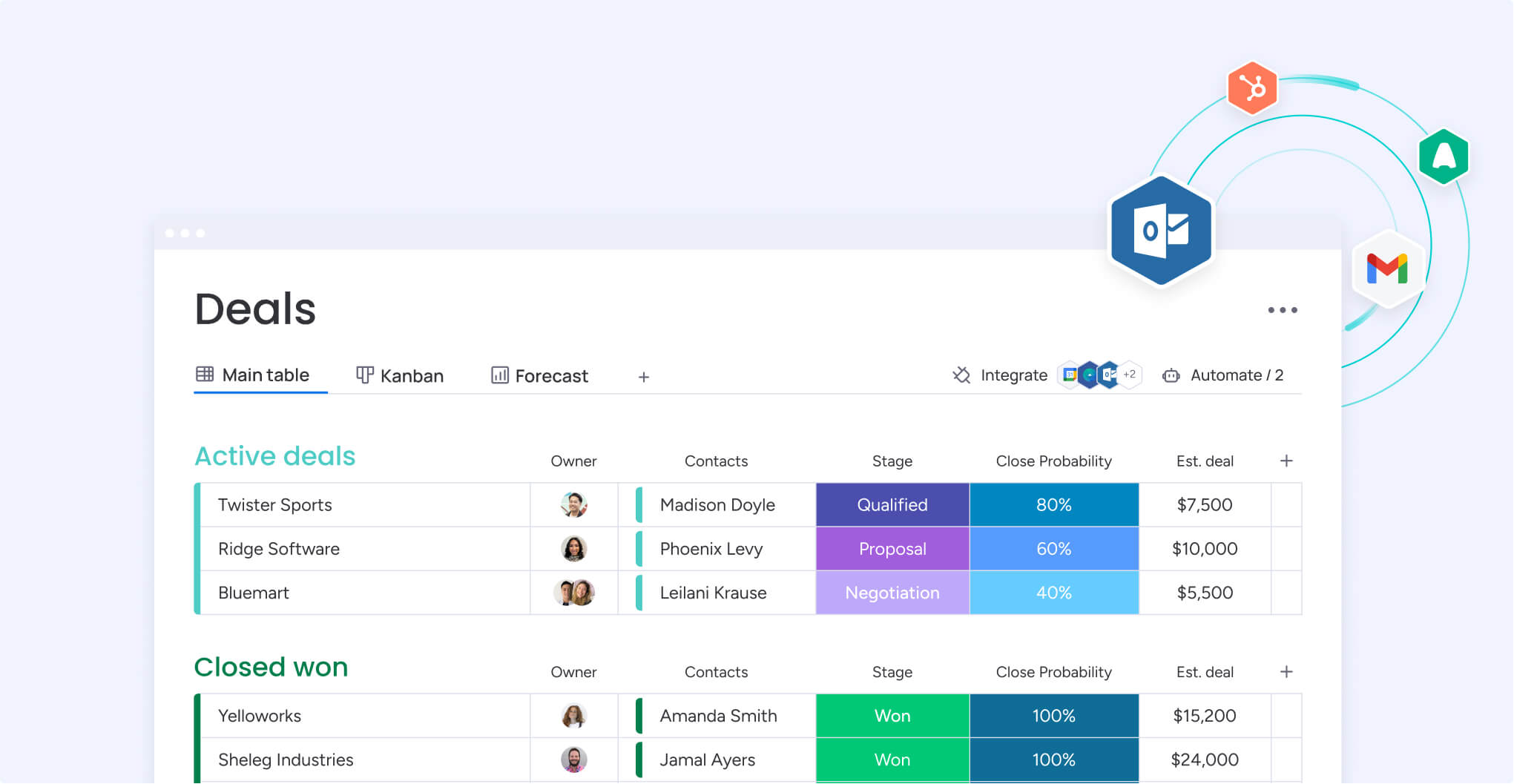
Create your landing page with platform like monday CRM that supports integration. That way, if your website is built on Shopify or Woocommerce, your landing page can send your data straight into your sales pipeline, so you can seamlessly track your new leads through the sales funnel.
Step 3: Capture customer attention
With the preparation done, the sales funnel begins and you start to generate awareness of your brand. Key online approaches could include:
- Display ads
- Social media advertising
- Influencer marketing
- Google Adwords
- Cold email marketing
- Podcasts and other forms of content marketing
While you’ll probably use several avenues simultaneously, all leads should be directed to the landing page you’ve developed in Stage 2 above.
Dedicate time with your team to plan out your marketing activities. To help with this, you can download monday.com’s free content calendar template to plan and track all of your content creation and distribution.
You’ll also need to establish the key lead generation metrics, and set benchmarks for each, so that you can track your effectiveness.
Common sales funnel metrics for digital marketing activities include:
- Traffic: the raw number of new visitors to your website.
- Click-through rate (CTR): the percentage of visitors who click through to your website after viewing an ad.
- Conversion rate: the percentage of visitors who then follow through with the desired action.
Step 4: Nurture your leads
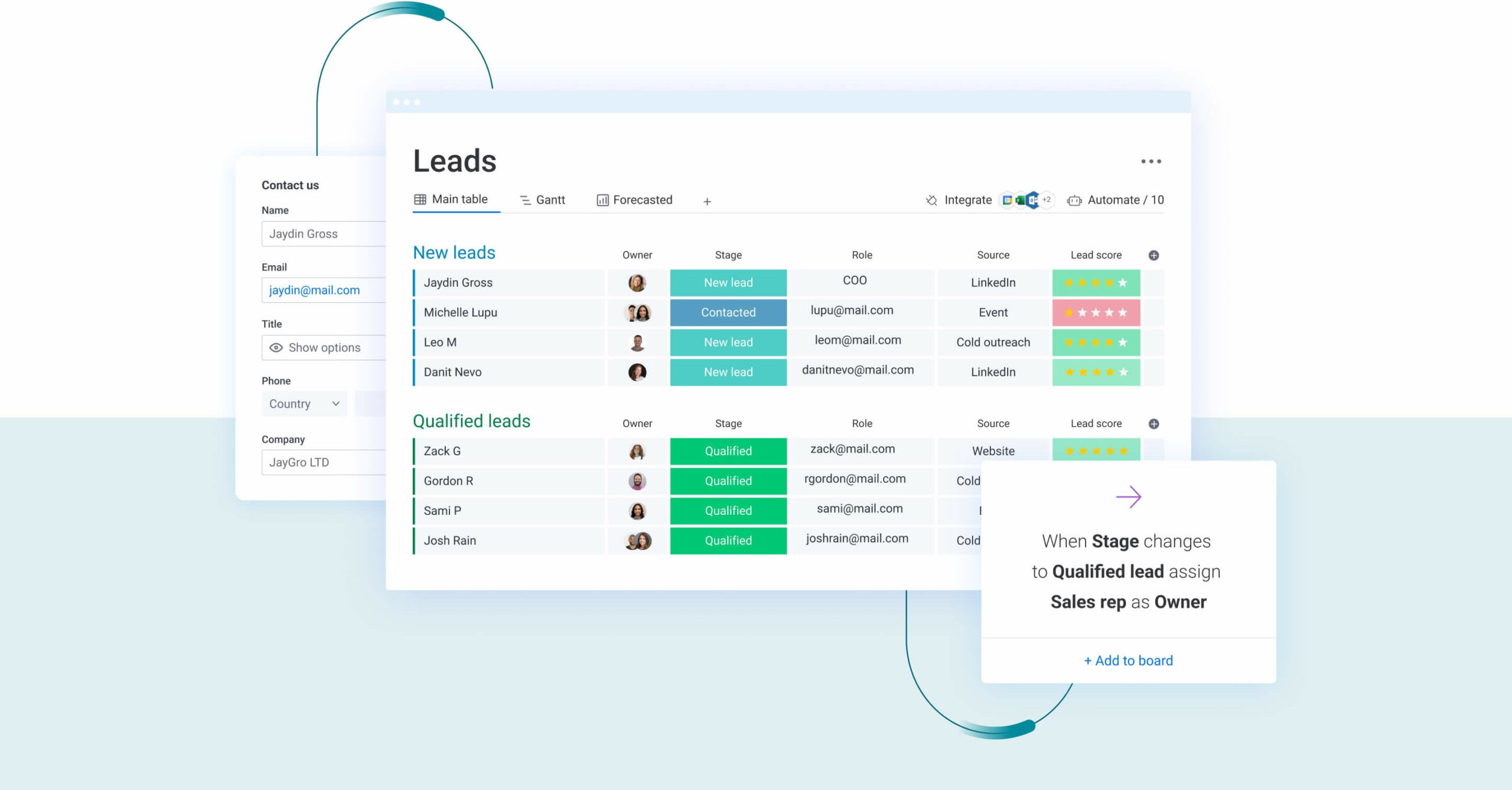
With 65% of businesses saying that lead generation is their biggest marketing challenge, it’s important to treat the leads you do generate gently.
Don’t be in a rush to get them to the bottom of the funnel by springing the sales pitch too early. If you put in the time and effort to nurture your leads’ interest, they’ll be more likely to buy when the time comes.
Use a range of nurturing activities, such as a sequence of automated but personalized emails to connect with your leads. Software such as Mailchimp and Hubspot make this easy, both of which integrate seamlessly with monday CRM.
Supplement email nurture campaigns with targeted social media ads to maximize visibility throughout the customer journey.
It’s a good idea to analyze your nurture campaign and run A/B tests to determine the most effective cadence and approaches.
While you don’t want to rush to the bottom, you can make a soft close at this stage. This is where you encourage the customer to say ‘yes’ to an offer without yet agreeing to buy. This could be the offer of a free trial or demo of its platform or an online webinar.
Step 5. Close the deal
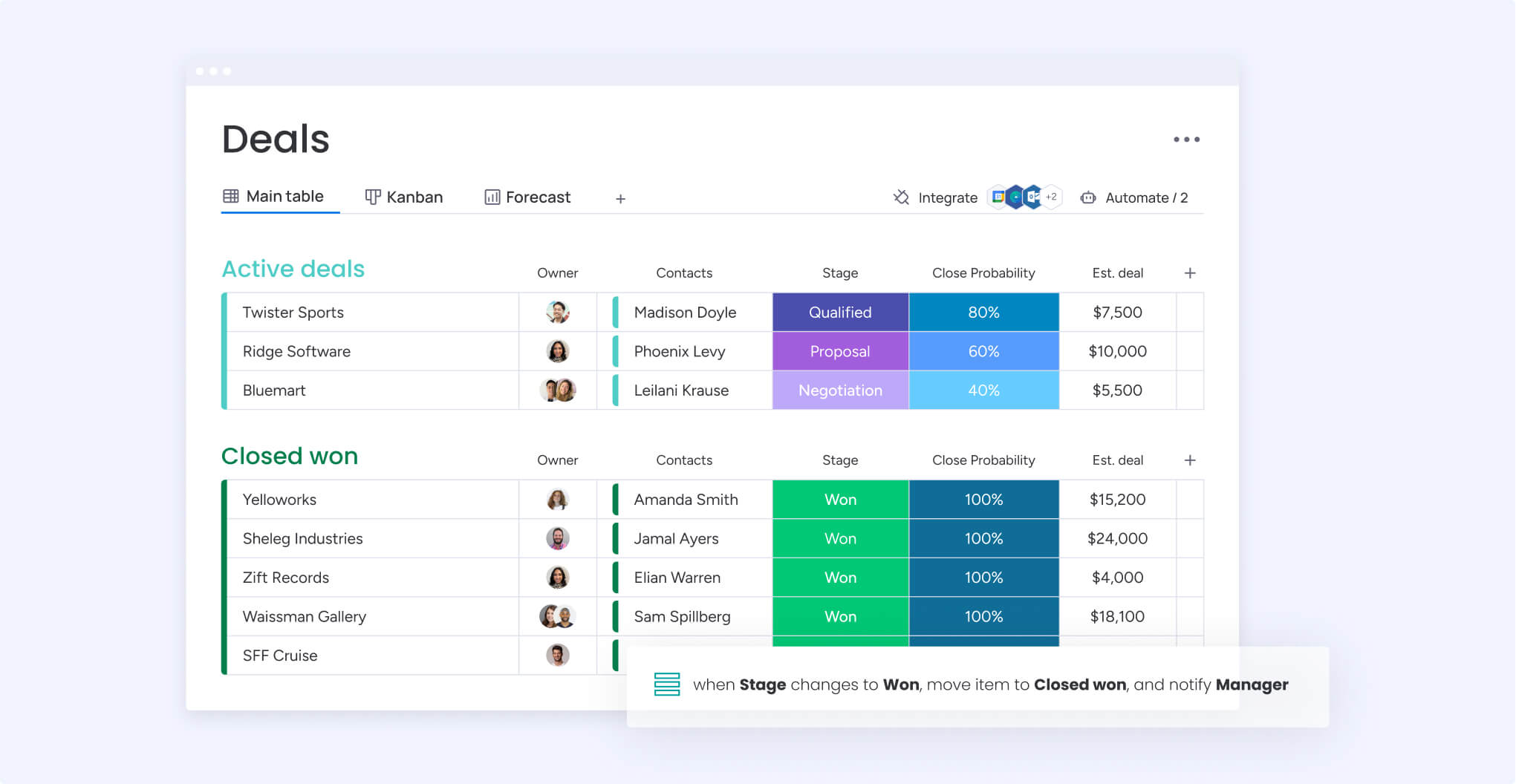
When your prospective customer does make it to the bottom of the funnel, it’s time for your sales rep to get involved — making the ask and handling any queries or remaining doubts.
monday CRM automation recipes can help you get the timing just right to maximize conversions. For example, you could set a prompt like “When the Nurture status changes to Complete, notify the sales team”, to nudge a sales rep to step in and close the deal.
Step 6. Review and optimize
As we’ve seen, the customer journey doesn’t end with a sale, and so you need to look to the future when building your sales funnel. Not only do you need to plan for continuing the customer relationship. You also need to continually review and adjust the funnel to meet changing customer needs and profiles.
Continue to monitor your key metrics — traffic, CTRs, and conversion rates — throughout the funnel, as well as benchmarks such as total marketing and sales qualified leads (MQL and SQL), cost per lead and per sale, and customer lifetime value. These allow you to set realistic targets, track performance, and identify leaks in the funnel.
With a sales dashboard in the monday CRM, you can easily track and report your deal progress, sales figures, and team performance.
Try monday CRMExample of a sales funnel
Here’s how a sales funnel might look for an e-commerce clothing brand:
Awareness
A Facebook user with a passing interest in health and fitness sees your sponsored social media advertisement while scrolling through their news feed.
Interest
The product and presentation resonate with their interests and they click on the ad, which takes them to the landing post for your featured product. They sign up for early notification of new product lines.
Consideration
The prospective customer browses through your product range and checks out the customer reviews. They might also explore your competitors and compare prices and reviews.
Intent
They provisionally add some items to the shopping cart and check the shipping costs, but don’t complete the purchase. They receive an automated email offering a 48-hour discount code.
Purchase
They return to their cart, apply the discount code, and complete the purchase.
Loyalty
Happy with the prompt delivery and high-quality products, they complete the customer experience survey you send them, share a review on your Facebook page, and sign up for the loyalty program to earn rewards on future purchases.
Build your sales funnel with monday CRM
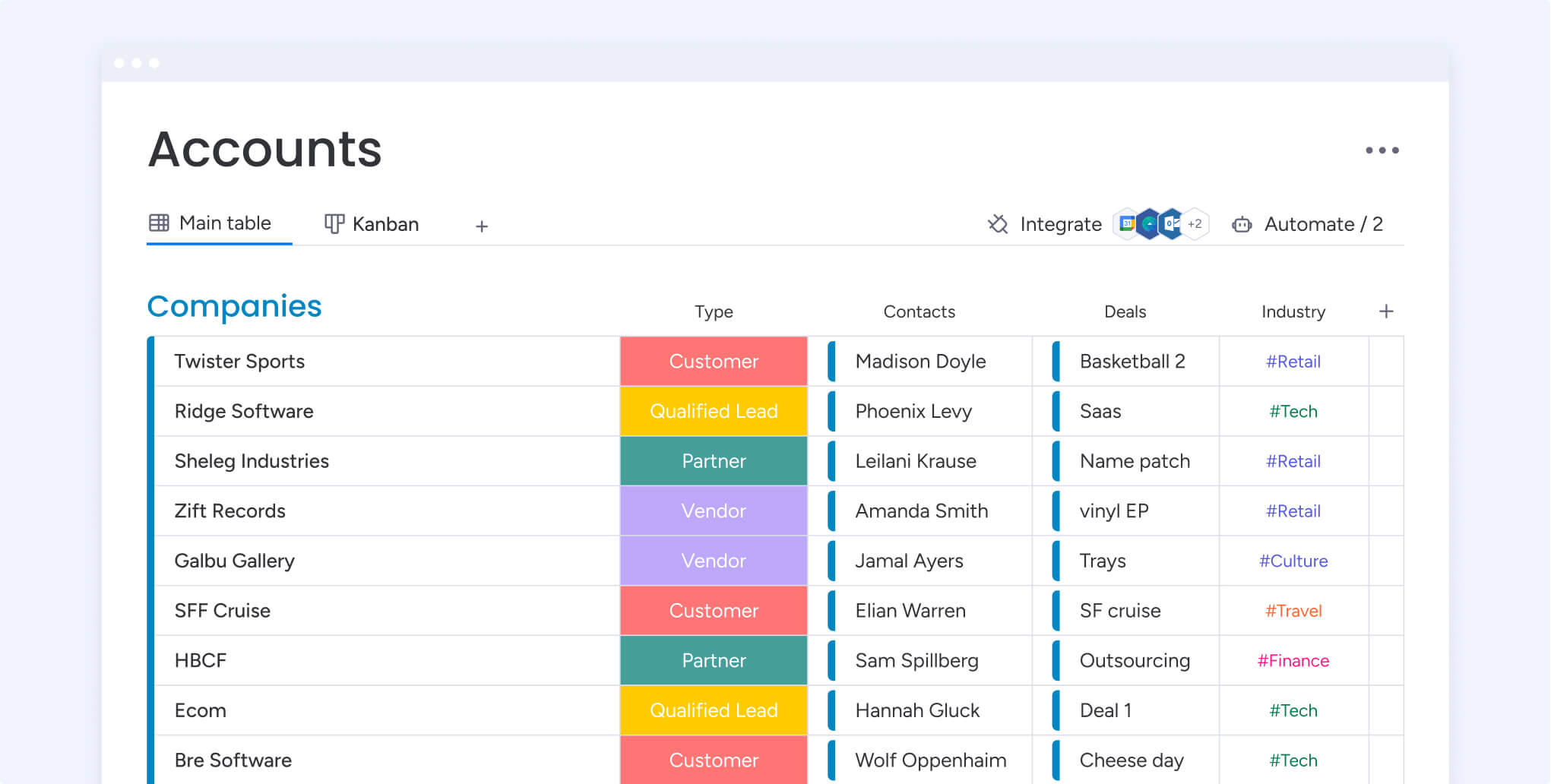
An effective sales funnel is all about the CRM system used to visualize it. With monday CRM, you gain visibility into your entire sales funnel, from lead to close.
With monday CRM, you get the best customer relationship management features to improve your sales funnel — by automating communications work, centralizing customer data, and generating insightful reports.
Manage and track emails
Sync your Gmail or Outlook and set automated notifications when a lead opens or replies to your emails.
Use AI-assisted email composition and customizable templates to quickly generate the right communications for your leads and send personalized emails in bulk, making outreach quicker and more efficient.
Track activity
With monday CRM, you can log all calls, meetings, and notes, so you can keep track of your leads through the sales funnel and plan your sales activities at each stage.
Capture and store leads
monday CRM offers a systematic lead management process with lead generation forms for capturing and storing leads in one place.
This lets you centrally store leads from across the board — your website, social media, and webinars — so that you can easily track, qualify, and nurture them.
Automate workflows
From sending emails and marketing materials to qualifying leads and assigning sales reps, monday CRM lets you automate many processes of sales funnel management.
Gain vital insights
With access to multifaceted and actionable data, your sales teams are empowered to understand your leads’ needs and preferences and make informed decisions and plans.
Get started to see how monday CRM can fix the leaks in your sales funnel and improve your conversion rates.
 Get started
Get started 
